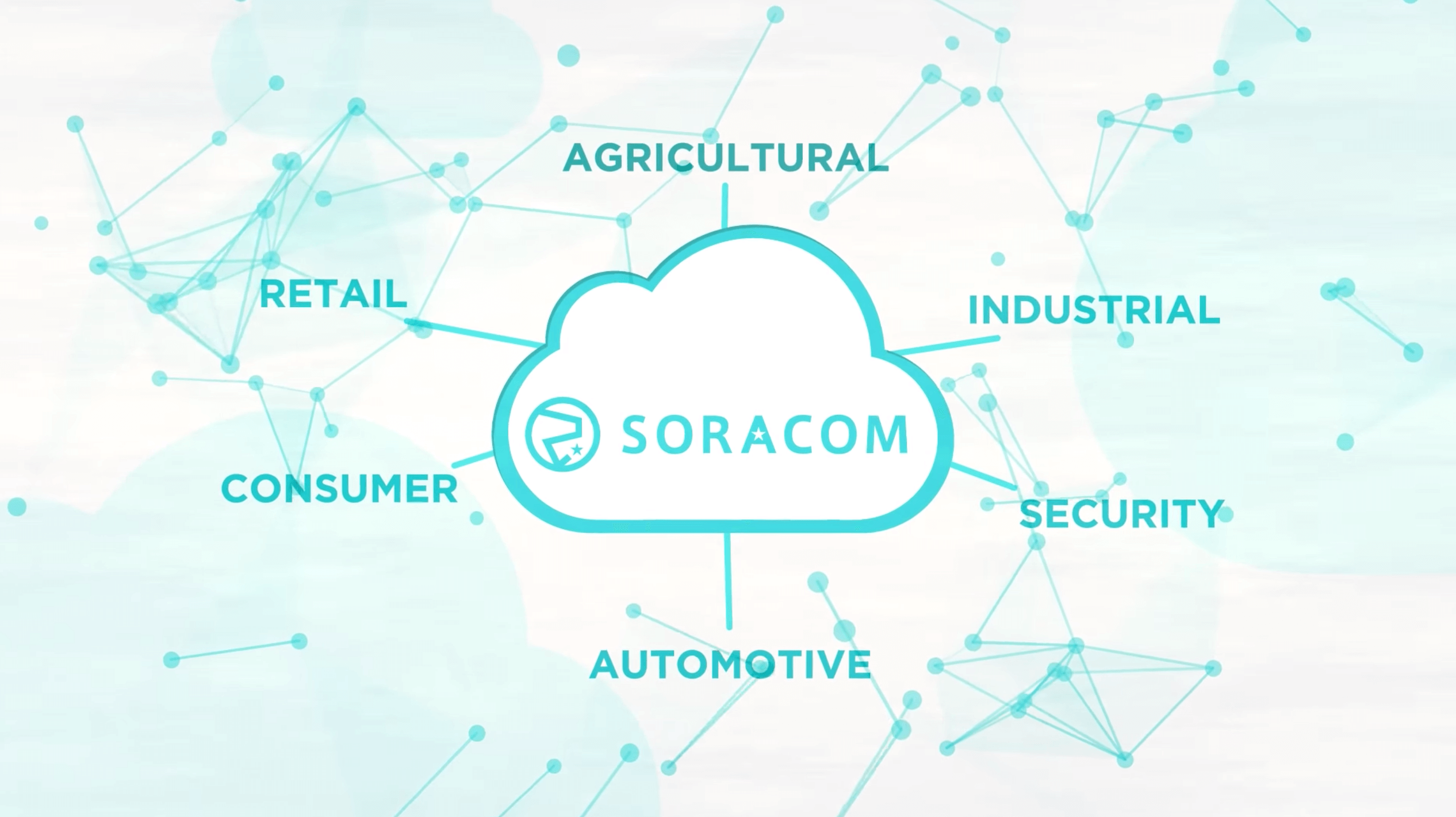IoT Solutions in Manufacturing – Cloud Connectivity, Predictive Analytics, Supply Chain, Automation

IoT-connected devices can improve the capabilities of businesses in any sector, as the technology has universal applications and benefits.
IoT technology provides electronic devices with the ability to interact with other IoT devices and collaborating on certain tasks or sharing specific data enables countless possibilities for virtually every industry.
In our globalized world, most processes, whether supply chain management or inventory monitoring, are far too spread out and convoluted to perfectly track.
IoT systems can ensure that nothing goes missing, machinery never fails and unnecessary waste never occurs.
Smart toasters, intelligent lighting and digital circuit breakers are just a few connected devices that make up the Internet of Things network, but people and businesses are catching on to the technology’s potential, and experimenting with it elsewhere.
The number of IoT-connected devices surpassed the global population back in 2008, and are expected to outpace the world’s mobile devices by the end of 2018.

By 2020, it’s expected that there will be 50 billion IoT-connected devices in our world.
With the rapid growth of IoT-connected devices comes the emergence of cloud-based services that enable the digital devices to flourish.
The manufacturing industry is a perfect example of how IoT and cloud-based services can work together to transform processes.
Most manufactured products are made up of thousands of unique components. A car has close to 30,000, for example.
These pieces travel across the world to one specific location, where they are combined into a whole product that consumers will purchase.
This supply chain is quite complex and global, but it isn’t out of the ordinary in today’s world.
While IoT-connected devices are helping these supply chains monitor where parts are going and identify where there are any inaccuracies, waste or cost, the massive amount of data that is required can only realistically be fulfilled by using the cloud.
Similarly, IoT technology and cloud-based services enable digital manufacturing as a more efficient and effective way to manufacture products.
Digital design, often through 3D printing and cloud-based design, can limit the testing and failing that traditional manufacturing goes through with production.
For example, imagine you’re trying to create a new premium smartphone. With traditional manufacturing, you might build a rough device, spot issues, scrap it, and move on to creating a second prototype phone.
Designing a new smartphone could take over 5 years, considering you have to manufacture each smartphone prototype and physically test it for errors.
On the other hand, digital design, using cloud-based services, results in decreased costs as manufacturers won’t have to pay for engineers to recreate products over and over. Plus, there will be greater product customization for the end consumer.
Their needs can easily be met for each product, as 3D printing and cloud-based design are flexible and dynamic in nature.
As a matter of fact, any immediate product change that needs to be made can be adapted to within seconds, as each device is synced with the cloud, facilitating near-instantaneous communication.
Together, IoT and cloud-based services are the future, enabling capabilities that were once considered impossible or, at the very least, too expensive.
However, as companies experiment with IoT-connected devices and cloud-based services to innovate their processes, the world prepares for the massive bandwidth that IoT is going to require.
Each network of connected devices has different needs, whether it be low power, ultra wide-band or Bluetooth.
Most of the field can be separated into four categories: LAN (Local Access Network), LPWAN (Low Power Wireless Access Network), Cellular LPWAN and cellular.
Wireless networks don’t require the cost of installing cables and can achieve network access in locations that are difficult to access. As a result, they are often sought after.
Cellular networks are a popular connection for IoT devices. It’s expected that the number of IoT-connected devices on cellular connections will rise from 400 million in 2015 to 1.5 billion in 2021.
IoT solutions require, first and foremost, a network that best fits your device ecosystem. This choice will often take into account performance, value, battery, coverage and other factors which can impact your project down the line.

IoT in the Manufacturing Industry
Every industry can greatly benefit from IoT-connected devices. This is because devices that share data and collaborate on tasks are universally ideal.
However, manufacturing, with its complex processes, countless moving pieces, and maintenance requirements, is an especially ideal industry for IoT applications.
In the age of Industry 4.0 and digitized production, the manufacturing industry has seen some of the most IoT investment in any industry to date.
According to IDC data, the manufacturing industry accounted for an $178-billion IoT investment in 2016, more than twice as much as the second largest vertical IoT market: transportation.
Manufacturing offers countless possibilities for IoT applications involving operational processes, inventory management, and supply chain monitoring.
According to Verizon’s 2016 State of the Market report:
- 76% of individuals in manufacturing believe IoT is increasing insight into customer preferences and behaviors.
- 66 percent use IoT to measure risks, protect company assets and improve staff safety.
- 60 percent are improving the reliability or performance of products and services with IoT.
IoT-connected devices can provide efficiency, automation and real-time tracking that cuts costs while improving overall productivity.
The manufacturing industry, in general, focuses on productivity at as low of a cost as possible.
As a result, these IoT applications can be as simple as automatically turning off the factory lights once the machinery stops, or lowering the heat when the last factory worker has gone home.
An example of IoT application in the manufacturing industry is placing sensors on every vehicle that your factory produces.
This boosts revenue by providing consumers with the bonus option for their car or truck, while automatically scheduling repairs and ordering parts if needed.
IoT should be considered in all industries, especially the manufacturing sector, as an investment; one that is sure to bring a gradual increase in productivity and decrease in cost over time.
IoT-connected devices and the massive amounts of data that they gather can help manufacturing by providing them with analytics that can inform future decisions.
This intelligence can be used to incorporate how often certain components of a machine need repair or when certain supplies run low.
Use Cases for IoT Applications in the Manufacturing Industry
Heavy Duty Equipment and Machinery
A well-known American machinery and equipment company partnered with Uptake, an industrial analytics firm, to implement sensors that collect data analytics on their equipment and fleets.
Their customers can view idle time, location and more all from remote access through the web or mobile tools. They could even check when their equipment needs repair or monitor their fuel efficiency.
Describing the partnership with Uptake, their chairman and CEO said “”we want to empower our customers with the insight necessary to shift from a reactive ‘repair after failure’ mode to a proactive ‘repair before failure’ stance.
“The end result will be more efficient operations and increased fleet availability for our customers. And the more our customers’ machines and engines stay running, the more money they make.”
IoT-connected devices provide manufacturers and their consumers with comprehensive insight into equipment logistics and analytics, enabling them to have total control over their machinery.
Airlines

Airbus is fully embracing the power of IoT technology. Their mission was to utilize IoT technology in three main sectors of their business: supply chain and logistics, engineering and manufacturing, and connected products.
According to Airbus’ IoT Technical Specialist Maxime Saraiva, “Airbus has developed a special algorithm aimed at providing enough data to track things but not so much that it costs too much or fails autonomy targets.”
“In order to do that, it defined events such as start of movement, end of movement and intermittent positions. As soon as an event is recorded, signals are received and used by the device to calculate its location. Data is sent to the network and transferred to Airbus, which allows us to display the location on a map.”
Airbus is also working to empower their factory workers with IoT-connected devices that improve the manufacturing process.
Factory workers identify a task that needs to be done, such as tightening a bolt on an airplane part, and scan it with their smart glasses or tablet.
Essentially, this identifies the size of bolt that is required as well as the torque necessary to tighten the bolt. Once this information has been verified, the order is sent to a robotic tool that completes the task for the factory worker.
This “cyber-physical” approach creates a manufacturing movement that optimizes processes and greatly reduces costs, as less mistakes are made and more planes are created in the same amount of time with the help of connected robotic tools.
These devices can be used by factory workers to assess tasks and designate orders to robots in the factory, improving efficiency and reducing cost.
Jean-Bernard Hentz, head of PLM R&T & Innovation at Airbus ICT, believes that “by connecting people and the tools they use to an IoT platform manufacturing speeds up, and reliability improves.”
Airbus is using IoT, not to replace its experienced factory workers, but as a tool to improve their productivity and accuracy along the manufacturing line.
Elevators
 With our population growing exponentially every day, urban planning has become even more important than ever.
With our population growing exponentially every day, urban planning has become even more important than ever.
People need places to live in, and cities are starting to run out of space to supply the demand, resulting in cities building skyscrapers that can house hundreds while taking up less ground space.
In our world, we heavily rely on elevators to ensure these people are safe and secure when they travel to and from their homes.
At New York’s One World Trade Center, ThyssenKrupp elevators carry an expected 3.5 million people every year.
Wanting to gain a competitive edge in their field by focusing on safety and reliability, ThyssenKrupp connected their elevators to the cloud.
Thousands of IoT-connected sensors monitor motor strength and numerous other factors, and that data is converted into valuable business insight for the company.
This drastically improved efficiency, as alarms would go off once breakdowns occurred, but it wasn’t enough for ThyssenKrupp.
They wanted more than a quick reactive response to elevator breakdowns, they wanted something that was preemptive and preventive.
ThyssenKrupp teamed up with Microsoft and CGI to create a predictive IoT solution for their elevators.
CGI helped connect ThyssenKrupp’s thousands of IoT devices to Microsoft’s cloud-based Azure Intelligent Systems Service.
This provides ThyssenKrupp technicians with real-time diagnostic updates through Power BI on Office 365 for data visualization.
Instead of reacting to elevator breakdowns, ThyssenKrupp can monitor the status of their elevators and define a need for repair before it occurs.
And because of IoT technology and its ability to facilitate a bilateral data from people to devices, ThyssenKrupp technicians can remotely operate the elevator if they need to put it out of commission or place it on a specific floor to do maintenance.
ThyssenKrupp’s investment in IoT technology, along with its partnership with Microsoft and CGI, ended up reducing their costs on purchasing new elevators and paying for around-the-clock maintenance support, and better efficiency through real-time diagnostic reports and remote access.
This helped them use IoT intelligence and cloud-based services to spot necessary repairs before breakdowns happen.
Best of all, these developments have the potential to save countless lives, as IoT intelligence and cloud-based services can be used to prevent potentially fatal elevator breakdowns
There are multiple real-life use cases for IoT applications in the manufacturing industry, and that number is still growing.
It’s estimated that the IIoT (Industrial Internet of Things) will bring close to $14.2 trillion to the global economy by as early as 2030.
Heavy Industrial Equipment
 IHI is a global manufacturer of heavy industrial equipment that works in four main areas — resource, energy and environment, social infrastructure and offshore facilities, industrial systems and general-purpose machinery, and aeroengine, space, and defense.
IHI is a global manufacturer of heavy industrial equipment that works in four main areas — resource, energy and environment, social infrastructure and offshore facilities, industrial systems and general-purpose machinery, and aeroengine, space, and defense.
Described as “intelligent worldwide power plant management”, IHI’s strategic business units offer comprehensive support and services for gas turbine power plants at all stages.
From design and manufacturing, to installation and monitoring, IHI ensures that power plants are properly designed, created and managed through their life cycle.
Due to the often remote location of power plants, IHI developed monitoring and maintenance capabilities that allow individuals to track data from anywhere.
This data is often used for real-time diagnosis of the power plant turbines and related equipment and devices, ensuring they are performing at an optimal level.
Although each part of the power plant is fully installed and meticulously monitored for optimal performance by IHI, rugged environments and normal wear and tear can have a negative impact on power plant equipment over time.
Normally, these issues would be rectified with a team of IHI workers who would travel to the remote location and make the changes.
However, with the emergence of IoT technology, service technicians can potentially make these component adjustments component changes from a remote location.
This saves them money on paying highly-qualified employees to travel to the specific physical power plant that needs adjustments, and improves convenience by offering the capability of remotely accessing operations.
The initial issue with this method is security. If a power plant was hacked, the damage that can be done to the surrounding region, or even state, can be fatal.
To solve this problem, IHI trusted the Soracom Gate private networking service, as it’s safe and supplies a cellular connection that has the capability to control and modify equipment parameters without sending any data over the insecure public internet.
Because of this, the Soracom Gate private networking service can prevent unauthorized access to IHI’s data or client systems.
Soracom’s pay-as-you-go pricing model saved IHI exorbitant costs. Instead of being forced to pay for a connection that enables full-time monitoring, Soracom allows IHI to create a channel of communication between their headquarters and a specific power plant, using Soracom Gate private networking service, when a problem is discovered at the power plant.
IHI could remotely manage their operations to solve the problem, and then break the channel of communication once their needs are met.
Like most IoT applications, this ensured that the cost is only being applied when the service is being used.
Today’s corporations are growing more and more global, and IHI is no different. With more than half of their gas turbine power plants outside of their national market, remote management is a crucial requirement for their business.
IHI uses Soracom Air to connect each individual power plant with their headquarters.
Instead of having to worry about interaction with countless individuals in numerous markets, IHI can use Soracom SIM cards, replicating the same service and success that they have at home when they travel abroad.
By partnering up with Soracom, IHI can quickly respond to any emerging conditions affecting their power plants anywhere in the world.
This improves reliability, performance and safety, while drastically reducing maintenance and salary costs.
Remote monitoring and management is an essential capability for all manufacturers, regardless of their specific products.
However, as with IHI and countless others, it’s important that network security is considered, as many of these connected devices, remotely managed through IoT technology, could fall into the hands of the wrong person if the data transfer connection isn’t secure.
3D Printing

Another example of a manufacturing company that is using IoT technology to improve their operations is K’s Design Lab, which focuses on 3D printing.
K’s Design Lab works with a wide range of 3D tools in its manufacturing process.
Once a user sends 3D data to a printer, the information is relayed to a cutting machine, a comprehensive tool that is built mainly for precision machinery.
Cutting machines allow for free-form curves and the creation of fine textures which lead to a more accurate and precise end product.
The 3D-Mill K-650, one of K ‘s Design Lab’s creations, offers 3D designers the tools and resources that they need to shape products out of a wide variety of materials.
Plus, the 3D-Mill K-650 uses cutting-edge technology like vacuum forming, part prototyping and external product design to provide designers with a premium experience.
K’s Design Lab applied IoT to their company by enabling users to control the process using a Windows tablet attached to the device. However, depending on factors like product size and the job specifics, the cutting process can take a very long time to complete.
Designers can’t be spending the entire cutting process standing beside the machine, with the tablet in their hands, controlling the production specifics.
In short, K’s Design Lab needed a way to remotely control and manage the cutting process while not sacrificing the security of their connection and data transfer.
They chose Soracom as their solution. By installing Soracom AIR SIM cards into the control tablets, K’s Design Lab can loan tablets to users.
Essentially, this enabled K’s Design Lab employees to monitor the cutting machine’s internal processes from a remote location, and intervene when necessary.
Since security was a concern for K’s Design Lab, they chose to deploy the Soracom’s Gate private networking service, as well as for a virtual private gateway set up on Soracom.
This ensured that despite the remote management and monitoring, their machinery was kept secure and uncompromised.
IHI and K’s Design Lab are just two examples of companies in the manufacturing industries that have used Soracom’s IoT Solutions to improve their efficiency.
Thanks to IoT technology, IHI can control and monitor global powerplant components from anywhere in the world using Soracom’s web console or API.
Best of all, this remote management and monitoring doesn’t sacrifice security, as Soracom Gate’s private networking service prevents unauthorized access.
And K’s Design Lab can continue creating with 3D printing without having employees stand by the machine for days to make sure nothing goes wrong.
By empowering their control tablet with remote management capabilities, Soracom helped K’s Design Lab improve their operations and flexibility while keeping their operations as secure as possible.
IoT projects are innovating industries across the board, bringing new levels of automated efficiency and control to the most complex processes imaginable.
Soracom IoT Solutions

At Soracom, productizing IoT is what matters most.
Soracom enables the creation of secure IoT systems with private connections, leased-line connection services, encryption and more.
These Soracom services ensure that you can build whatever IoT system you dream up without having to expose it to the public internet.
Soracom’s platform also facilitates remote management of multiple SIMS through the web console or API.
This means easy and convenient access to your IoT-connected device network.
IoT technology is changing our world for the better, and Soracom wants to help you take your IoT projects off the ground.
Soracom has made cloud connectivity easier than ever with a pay-as-you-go model that saves you money.
Say goodbye to the forced data usage rates that have you spending money and wasting unnecessary amounts of data.
With Soracom, you pay the bare minimum, and we only charge you for the data you need: nothing more, nothing less.
Whether you want to secure your IoT connections or enable extensive monitoring for your devices, Soracom offers tools and resources that can guide you on your IoT journey.
Schedule a demo with our solutions team to learn how Soracom can help you productize IoT technology.




